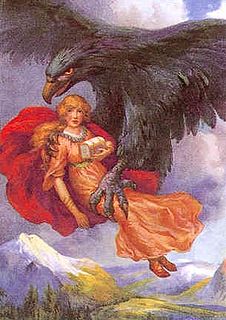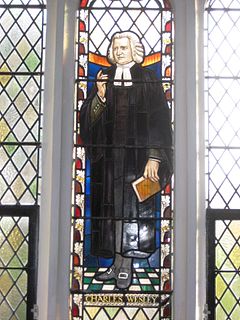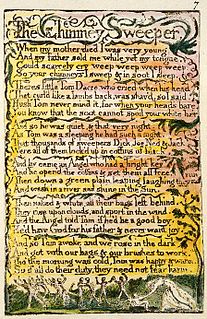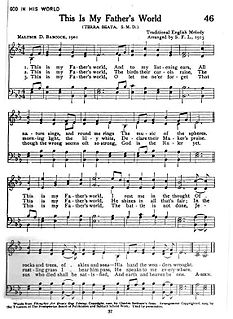The topic of this article may not meet Wikipedia's notability guideline for biographies .(November 2016) |
Febo di Poggio was an Italian model, affiliated with the Renaissance artist Michelangelo.
The topic of this article may not meet Wikipedia's notability guideline for biographies .(November 2016) |
Febo di Poggio was an Italian model, affiliated with the Renaissance artist Michelangelo.
In Michelangelo's poetry G.99, he alludes to Febo as Phoebus and further puns on his surname "del Poggio" which means "of the hill." This is clearly seen in the first stanza:
I truly should, so happy was my lot,
While Phoebus was inflaming all the hill,
Have risen from the earth while I was able,
Using his feathers and thus make my dying sweet.
Furthermore, Michelangelo shows his grief with Febo when he states in the second stanza:
Now he left me. And if he vainly promised
To make me happy days go by less quickly.
The allusion of the bird is further re-iterated in the third stanza or the start of sextet:
His feathers were my wings, his hill my steps,
Phoebus was a lamp for my feet. To die then
Would have been my salvation and pleasure.
Michelangelo was so affected by Febo that he ends the poem with references to classical death:
Now dying without him, my soul won't rise to Heaven.
In the poem G.100, Michelangelo alludes to Poggio as Apollo when he states:
To me Heaven was surely merciless,
Fusing your live beam on two eyes alone,
when, with its rapid and eternal motion,
The journey it gave to you, the light to us [1]

"Invictus" is a short poem by the Victorian era British poet William Ernest Henley (1849–1903). It was written in 1875 and published in 1888 in his first volume of poems, Book of Verses, in the section Life and Death (Echoes).

Michelangelo di Lodovico Buonarroti Simoni, known as Michelangelo, was an Italian sculptor, painter, architect, and poet of the High Renaissance. Born in the Republic of Florence, his work was inspired by models from classical antiquity and had a lasting influence on Western art. Michelangelo's creative abilities and mastery in a range of artistic arenas define him as an archetypal Renaissance man, along with his rival and elder contemporary, Leonardo da Vinci. Given the sheer volume of surviving correspondence, sketches, and reminiscences, Michelangelo is one of the best-documented artists of the 16th century. He was lauded by contemporary biographers as the most accomplished artist of his era.

In Norse mythology, Njörðr is a god among the Vanir. Njörðr, father of the deities Freyr and Freyja by his unnamed sister, was in an ill-fated marriage with the goddess Skaði, lives in Nóatún and is associated with the sea, seafaring, wind, fishing, wealth, and crop fertility.

In Norse mythology, Þjazi was a jötunn. He was a son of the jötunn Ölvaldi, brother of Iði and Gangr, and the father of Skaði. His most notable misdeed was the kidnapping of the goddess Iðunn, which is related in both the Prose Edda and the skaldic poem Haustlöng.
A Shropshire Lad is a collection of sixty-three poems by the English poet Alfred Edward Housman, published in 1896. Selling slowly at first, it then rapidly grew in popularity, particularly among young readers. Composers began setting the poems to music less than ten years after their first appearance, and many parodists have satirised Housman's themes and poetic style.

"O for a Thousand Tongues to Sing" is a Christian hymn written by Charles Wesley. The hymn was placed first in John Wesley's A Collection of Hymns for the People Called Methodists published in 1780. It was the first hymn in every (Wesleyan) Methodist hymnal from that time until the publication of Hymns and Psalms in 1983.

"Away in a Manger" is a Christmas carol first published in the late nineteenth century and used widely throughout the English-speaking world. In Britain, it is one of the most popular carols; a 1996 Gallup Poll ranked it joint second. Although it was long claimed to be the work of German religious reformer Martin Luther, the carol is now thought to be wholly American in origin. The two most-common musical settings are by William J. Kirkpatrick (1895) and James Ramsey Murray (1887).

"Roses Are Red" is the name of a love poem and children's rhyme with Roud Folk Song Index number 19798. It has become a cliché for Valentine's Day, and has spawned multiple humorous and parodic variants.

Dark Night of the Soul is a poem written by the 16th-century Spanish mystic and poet St. John of the Cross. The author himself did not give any title to his poem, on which he wrote two book-length commentaries: Ascent of Mount Carmel and The Dark Night.

"The Chimney Sweeper" is the title of a poem by William Blake, published in two parts in Songs of Innocence in 1789 and Songs of Experience in 1794. The poem "The Chimney Sweeper" is set against the dark background of child labour that was prominent in England in the late 18th and 19th centuries. At the age of four and five, boys were sold to clean chimneys, due to their small size. These children were oppressed and had a diminutive existence that was socially accepted at the time. Children in this field of work were often unfed and poorly clothed. In most cases, these children died from either falling through the chimneys or from lung damage and other horrible diseases from breathing in the soot. In the earlier poem, a young chimney sweeper recounts a dream by one of his fellows, in which an angel rescues the boys from coffins and takes them to a sunny meadow; in the later poem, an apparently adult speaker encounters a child chimney sweeper abandoned in the snow while his parents are at church or possibly even suffered death where church is referring to being with God.

"Ode to Psyche" is a poem by John Keats written in spring 1819. The poem is the first of his 1819 odes, which include "Ode on a Grecian Urn" and "Ode to a Nightingale". "Ode to Psyche" is an experiment in the ode genre, and Keats's attempt at an expanded version of the sonnet format that describes a dramatic scene. The poem serves as an important departure from Keats's early poems, which frequently describe an escape into the pleasant realms of one's imagination. Keats uses the imagination to show the narrator's intent to resurrect Psyche and reincarnate himself into Eros (love). Keats attempts this by dedicating an "untrodden region" of his mind to the worship of the neglected goddess.

Easter, 1916 is a poem by W. B. Yeats describing the poet's torn emotions regarding the events of the Easter Rising staged in Ireland against British rule on Easter Monday, April 24, 1916. The uprising was unsuccessful, and most of the Irish republican leaders involved were executed for treason. The poem was written between May and September 1916, printed privately, 25 copies, and appeared in magazines in 1920 but first published in 1921 in the collection Michael Robartes and the Dancer.
"On Monsieur’s Departure" is an Elizabethan poem attributed to Elizabeth I. It is written in the form of a meditation on the failure of her marriage negotiations with Francis, Duke of Anjou, but has also been attributed to her alleged affair with, and love of, Robert Dudley, 1st Earl of Leicester.

F. De Samara to A. G. A. is a poem by British author and poet Emily Jane Brontë, written on November 1, 1838.
"We are Seven" is a poem written by William Wordsworth and published in his Lyrical Ballads. It describes a discussion between an adult poetic speaker and a "little cottage girl" about the number of brothers and sisters who dwell with her. The poem turns on the question of whether to account two dead siblings as part of the family.
The Passion is an unfinished ode by John Milton that was possibly written in 1630 and was first published in 1645 or 1646. The poem connects Christ's Crucifixion with his Incarnation. It is linked to two other poems of Milton: On the Morning of Christ's Nativity and Upon the Circumcision

"This is My Father's World" is a Christian hymn written by Maltbie Davenport Babcock, a minister from New York, and published posthumously in 1901.
Gherardo Perini was a model for Michelangelo and came to work for him around 1520. When Perini failed to show up to his studio, Michelangelo was distraught and stated "I beg you not to make me draw this evening since Perino's not here." On that same page, he drew a naked putto urinating into a vase.
The Dialogue of Pessimism is an ancient Mesopotamian literary composition in the form of a dialogue between a master and his slave. Its interpretations have varied, but it is generally considered an unusual text which thematises the futility of human action. It is an example of ancient Near Eastern wisdom literature.

"The Good-Morrow" is a poem by John Donne, published in his 1633 collection Songs and Sonnets.